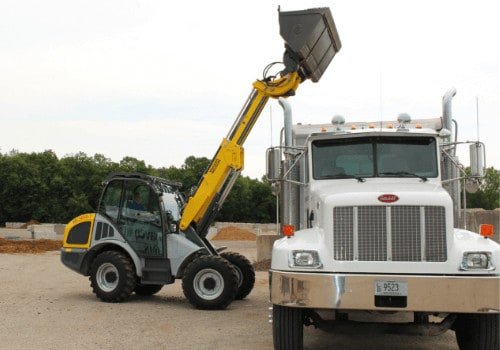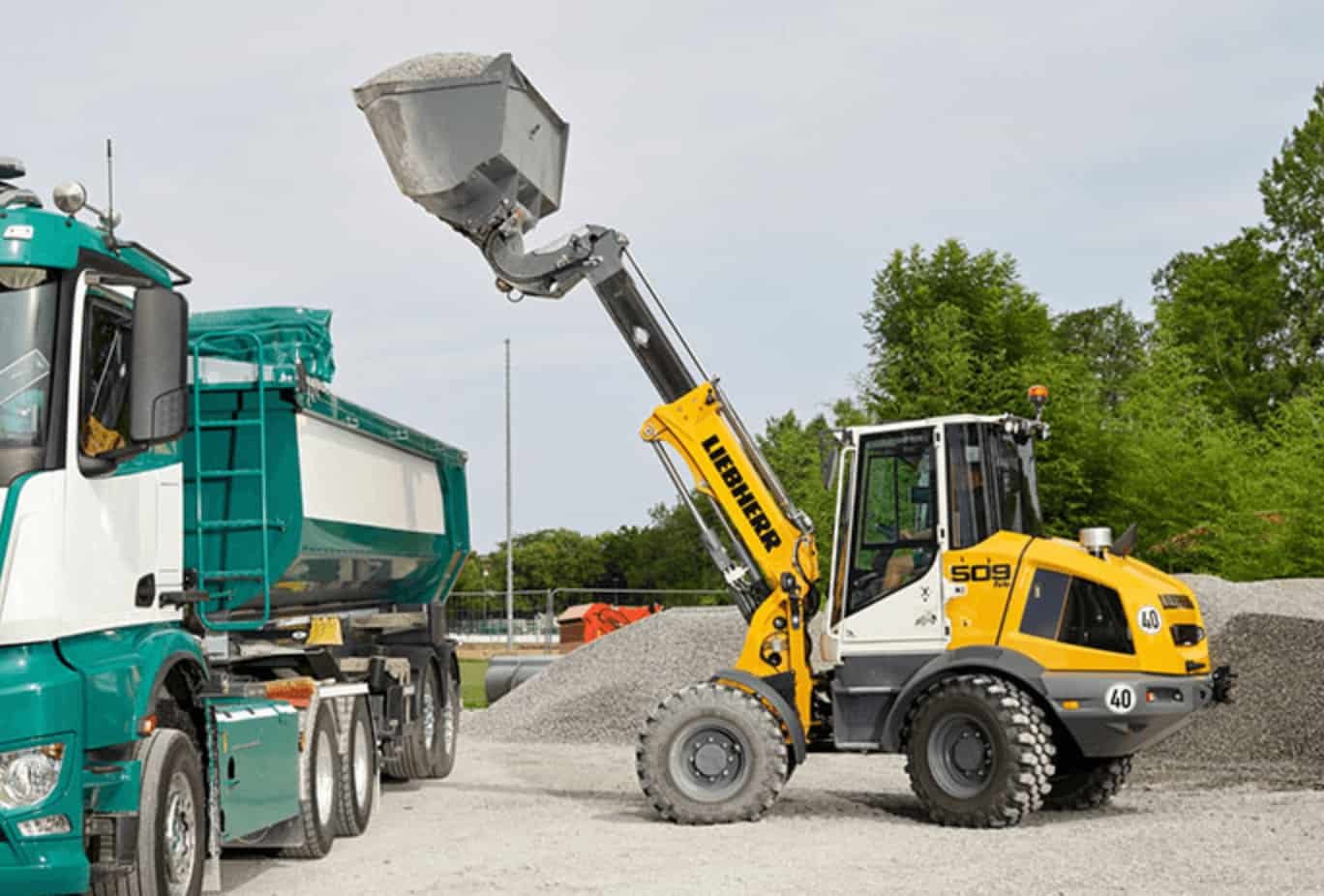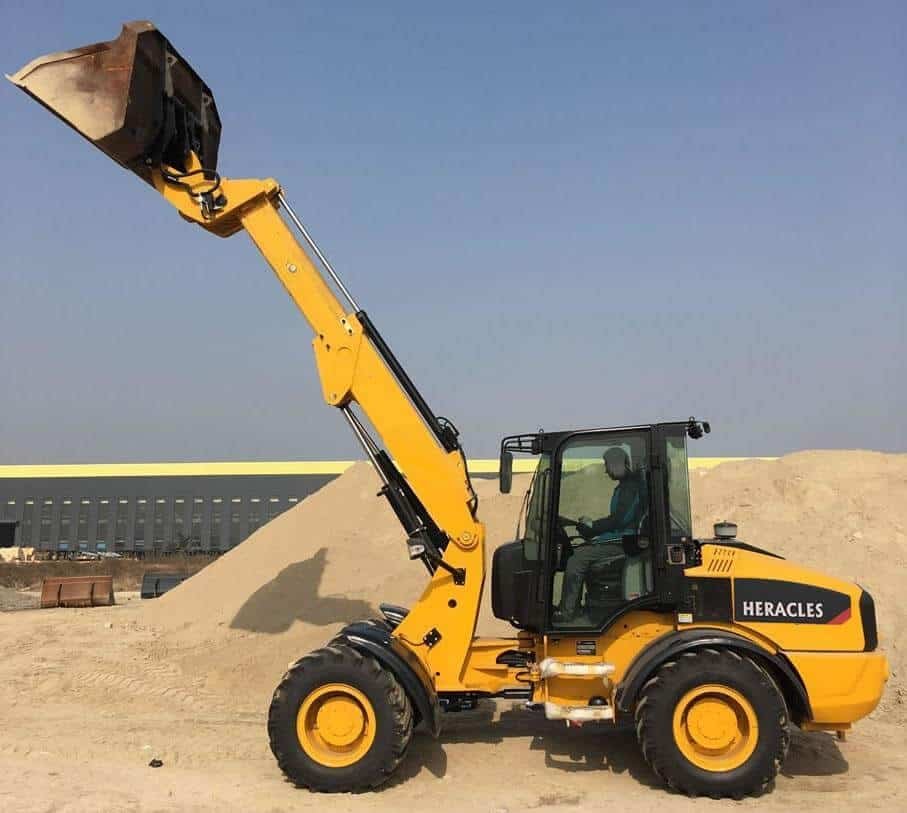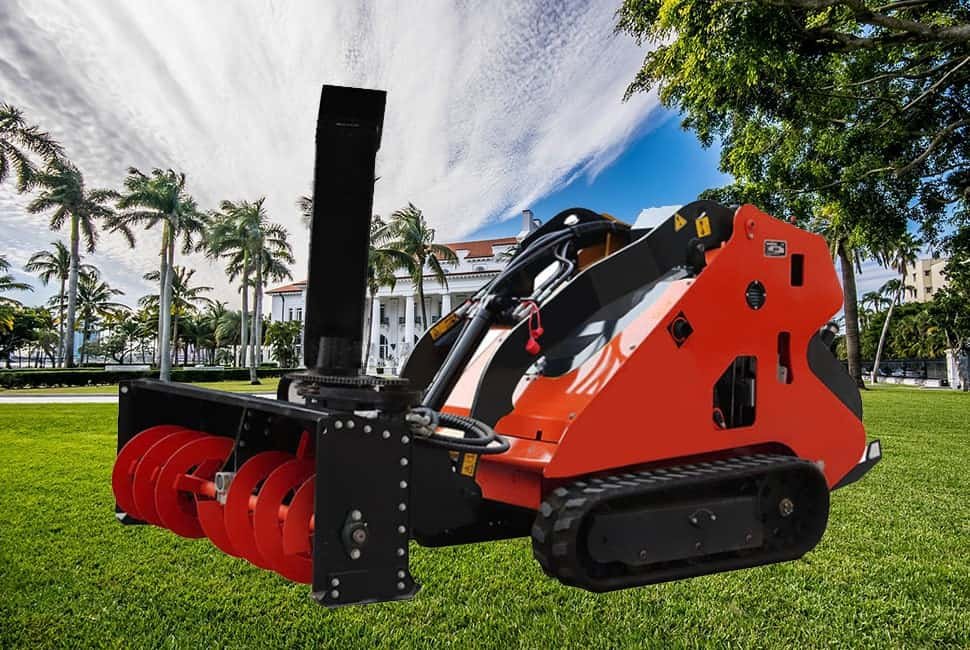Introduction
Telescopic loaders are versatile machinery used in construction, agriculture, and other industries. However, operating them improperly can result in severe accidents and injuries.
It’s essential to prioritise safety when you operate a telescopic loader to protect yourself, your coworkers, and anyone else on the job site. This blog will provide a comprehensive guide on safely operating a telescopic loader.
We’ll cover pre-operation checks, familiarisation with controls, loading and unloading, travelling with a loaded machine, operating in different environments, operating safely around people and other equipment, and maintenance and inspection.

Operate a Telescopic Loader: Pre-operation Checks
Before operating a telescopic loader, conducting pre-operation checks is important to ensure the machine is in good working condition. These checks help identify potential issues or hazards that could be dangerous during operation. Here are some key pre-operation checks to consider:
Visual Inspection of the Machine
Start by visually inspecting the telescopic loader for any damage or visible defects when operating a telescopic loader. Look for any signs of wear and tear, including cracks, dents, or rust. Check the machine’s body, boom, and attachments to ensure they are all in good condition. If you notice any issues, do not operate the machine until they have been addressed.
Checking the Fluid Levels
The next step is to check the fluid levels, including hydraulic fluid, engine oil, and coolant. Make sure the levels are within the recommended range. If any of the fluids are low, add more as needed. If you notice any leaks, wait to operate the machine until they have been repaired.
Checking the Tires and Brakes
Check the tires for signs of wear and tear, and ensure they are correctly inflated when operating a telescopic loader. Inspect the brakes to ensure they are in good working condition. Test the brakes to ensure they are responsive and can stop the machine effectively.
Making Sure All Safety Features Are in Place
Before operating the machine, ensure all safety features are in place and functioning correctly. This includes seat belts, warning lights, and backup alarms. Ensure that all attachments are properly secured and that the machine is properly balanced and stable.
By conducting these pre-operation checks, you can ensure that the telescopic loader is safe to operate. Always prioritise safety when operating heavy machinery and follow all manufacturer guidelines and safety protocols.
Operate a Telescopic Loader: Familiarisation With Controls
Familiarising yourself with the controls of a telescopic loader is essential for safe and efficient operation. Before operating the machine, take the time to study the operator’s manual and become familiar with all the controls. This will help you understand how the machine operates and how to use it effectively.
Explanation of Basic Controls
The basic controls of a telescopic loader typically include a steering wheel, accelerator and brake pedals, a gear selector, and joystick controls for the boom and attachments. The boom controls are essential, as they allow you to adjust the height and reach of the boom and manipulate attachments such as buckets and forks.
Understanding the Hydraulics System
The hydraulic system is a critical component of a telescopic loader, as it powers the boom and attachments. Understanding how the hydraulic system works and how to use it effectively is key to safe and efficient operation. You should know the hydraulic pressure and flow rate and how they affect the machine’s performance.
Practising With the Controls
Practising with the controls is essential for developing the skills and confidence to safely operate a telescopic loader. Start by practising with the boom and attachments, getting a feel for how they respond to different inputs. Then, practice driving the machine, getting used to the steering, acceleration, and braking. Always follow safe operating procedures and maintain a safe distance from other people and equipment.

Loading and Unloading
Loading and unloading are critical tasks that must be performed safely and efficiently to prevent injury, damage to equipment, and cargo loss. One of the essential steps in loading and unloading is choosing the right attachment for the job. The attachment should be compatible with the cargo’s load, weight, and shape. For example, using a pallet jack to move a heavy load that requires a forklift can lead to accidents.
Another critical aspect of loading and unloading is properly securing the load when operating a telescopic loader. It is essential to use straps, chains, or other restraints to prevent the cargo from shifting or falling during transport. Maintaining proper balance and stability is crucial to prevent the load from tipping over or causing the vehicle to become unstable.
Overloading is another common issue that can lead to accidents and damages. It is crucial to adhere to the recommended weight limits and distribute them evenly to prevent the vehicle from becoming overloaded and losing stability.
Operate a Telescopic Loader: Travelling With a Loaded Machine
Understanding the Centre of Gravity
Travelling with a loaded machine can be challenging and potentially dangerous. To ensure a safe journey, it is essential to understand the concept of the centre of gravity when operating a telescopic loader. The centre of gravity is where the machine’s weight is evenly distributed, and any load added will shift the centre of gravity. Keeping the load as close to the machine’s centre of gravity as possible is essential to maintain stability and prevent tipping.
Maintaining Safe Speeds
Maintaining safe speeds is also crucial when travelling with a loaded machine. High speeds can make the machine unstable and challenging, especially when navigating uneven terrain or steep inclines. It is important to drive at a speed appropriate for the load and the terrain, considering factors such as wind, visibility, and other hazards.
Avoiding Sudden Stops and Sharp Turns
Avoiding sudden stops and sharp turns is another important consideration when travelling with a loaded machine. Abrupt stops or turns can cause the load to shift, potentially leading to instability or even a rollover. Slowing down gradually when approaching a turn is essential, maintaining control of the machine and the load.
Operating in Different Environments
Working On Rough Terrain
Operating machinery in different environments requires an understanding of the challenges that come with each setting. Working on rough terrain, for instance, can cause the machine to become unstable and difficult to control. In such cases, it is crucial to use appropriate tyres or tracks and to adjust the machine’s suspension to ensure maximum stability.
Working In Confined Spaces
Working in confined spaces can also present significant challenges, mainly when operating large or heavy machinery. In such cases, using appropriately sized and manoeuvrable equipment and ensuring adequate ventilation and lighting is essential. Operators must also be trained to navigate tight spaces safely, using mirrors and other tools to maintain visibility.
Working on Slopes and Inclines
Working on slopes and inclines requires additional precautions to maintain stability and prevent accidents. Operators must ensure that the machine is correctly positioned and level and that the load is distributed evenly. The machine’s brakes and transmission must be used effectively to prevent it from sliding or rolling downhill, and operators must be trained to recognise and respond to signs of instability.

Operating Safely Around People and Other Equipment
Keeping a Safe Distance From Other People and Machines
Operating machinery around people and other equipment requires careful attention to safety. One of the most essential steps in operating safely is keeping a safe distance from other people and machines. Operators must ensure they have a clear view of the job site and are aware of potential hazards. It is also essential to use appropriate signage or barriers to prevent unauthorised access to the work area.
Using Spotters When Necessary
Spotters can also help prevent accidents and ensure that people and machines are kept at a safe distance. Spotters are trained to assist the operator navigating the job site, providing guidance and warnings when necessary. They can help identify potential hazards, communicate with other workers, and ensure safety.
Communicating With Others on the Job Site
Communicating with others on the job site is also crucial when operating machinery. Operators must be trained to use hand signals, radios, or other communication tools effectively, ensuring that everyone is aware of what is happening and can respond quickly to any issues. Operators must also be prepared to respond to signals or warnings from other workers, taking appropriate action to ensure safety.
Maintenance and Inspection
Regular maintenance and inspection are essential to keeping machinery in good working order and preventing breakdowns or accidents. A well-maintained machine is safer and more efficient and cost-effective in the long run.
Developing a regular maintenance and inspection schedule is the first step in keeping machinery in good condition. The schedule should include routine tasks such as checking fluid levels, inspecting hoses and belts, and lubricating moving parts. It should also have more in-depth inspections at regular intervals to identify potential problems and address them before they become significant issues.
Keeping the machine clean and well-maintained is also essential for ensuring longevity and safety. Regular cleaning helps prevent the buildup of dirt and debris, damaging the engine or creating hazards for operators and other workers. Regular maintenance tasks such as replacing filters and fluids can also help prevent wear and tear on the device and ensure it operates at peak efficiency.
Addressing any issues promptly is also essential to maintaining the safety and efficiency of the machine. Operators and maintenance personnel must be trained to recognise potential problems and respond quickly to prevent further damage or accidents. Regular inspection and maintenance can help to identify potential issues before they become major problems, allowing for prompt and cost-effective repairs.

Operate a Telescopic Loader: Conclusion
Operating a telescopic loader safely requires a thorough understanding of the machine, its capabilities, and the environment in which it will be used. Operators must be properly trained to operate the machine and understand the risks associated with its operation.
They must also know the importance of choosing the right attachment, securing the load, maintaining proper balance and stability, avoiding overloading, and travelling safely. Operating safely around people and other equipment, working in different environments, and conducting regular maintenance and inspection are also essential for safe operation.
By following these guidelines and taking necessary precautions, operators can help to ensure that telescopic loaders are operated safely and efficiently on job sites of all types.
Contact Us today to purchase a customizable telescopic loader from our experienced manufacturers.





















